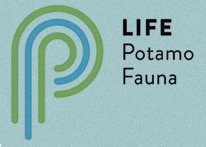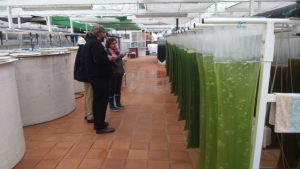The Consorci de l’Estany visits Portugal and Galicia to improve the reproduction of the naiads
• Staff members of the Consorci de l’Estany visited two breeding centers of two naiads LIFE projects and a clam breeding center of the Xunta de Galicia • The visit was useful to exchange knowledge and experiences in breeding freshwater mussels in the context of Networking in the European LIFE projects
In 2010 the Consorci de l’Estany began captive breeding of naiads or river mussels, species Unio mancus and Unio ravoisieri in the framework of the LIFE project funded by the European Union, called “Projecte Estany". This project was executed between 2010 and 2013 and allowed the breeding of thousands of young individuals of both species and the repopulatation of some hundreds of individuals of more than 2 centimeters at the Lake of Banyoles and also in some streams and ditches around them. These actions represented a substantial improvement in wild populations of this endangered species.
The new project Potamo Fauna LIFE (LIFE12 NAT/ES/0001091) has recently started and takes profit of the knowledge and facilities obtained during the previous project for the reproduction of the naiads basins Ter and Fluvià. Between 2014 and 2017 juvenile river mussels will be repopulated and will improve populations of Llémena, Brugent, Ter and FluviàRivers, streams like Xuclà and Riudelleques, and the Lake of Banyoles. In the framework of this project some improvements to increase productivity of youth suitable for their release to the environment have been developed. Naiads breeding allows to produce a lot of juvenile individuals, but these suffer from high mortality and only a low percentage reach two years of age. All phases of reproduction in captivity can still improve a lot, as there are many unknown aspects in ecology and reproduction of these species.
To improve production and increase the survival of juveniles similar projects with naiads were visited. The first project visited on February 23rd was the Ecotone LIFE (http://ecotone.pt) in Portugal, focused to the management of riparian habitats for the conservation of threatened invertebrates (LIFE10 NAT/PT/000073). This project is reproducing in captivity two species of naiad, and Unio margaritifera and Margaritifera tumidiformis in facilities located two hours drive from Lisbon, in the village of Campello. The center ichthyological engaged in breeding also cyprinid fish species, and were able to observe the breeding facilities and learn about details such as food fish and seaweed naiads, disease control, phenology, and so on.
On the 24th the reproduction center of naiads in Rego Mera, Lugo, Galicia was visited, where another LIFE project is dedicated to raising naiads. The LIFE Project MargalUlla (http://margalulla.xunta.es) is dedicated to the recovery of populations of naiad Margaritifera margaritifera and the Pyrenean Desman, Galemys pirenaicus the Ulla river basin between 2010 to 2015 and is led by the Government of Galicia. The center could has very modern facilities, cooling water systems, ultraviolet disinfection, automatic collection of youth, large tanks with trout and the process of fattening in closed containers with youth seaweed. In the afternoon it took place a seminar discussion with several members of the Department of Zoology and project managers Lugo Campus of the University of Santiago de Compostela, where it was explained the work done in the laboratory breeding of Consorci de l’Estany in Banyoles.
Finally on 25 February the staff visited the facilities of CIMA Ribadeo (Centro de Investigaciones Marinas- http://www.medioruralemar.xunta.es/cima), a center depending on the Xunta de Galicia dedicated to research to improve the production of juveniles of different species of razor clams and subsequently ceded to the guilds that exploit these species. Food and maintenance of marine juvenile clams presents very similar aspects to the same phase of freshwater mussels, and see the large scale production of seed clams have opened a new way to improve productivity.



















